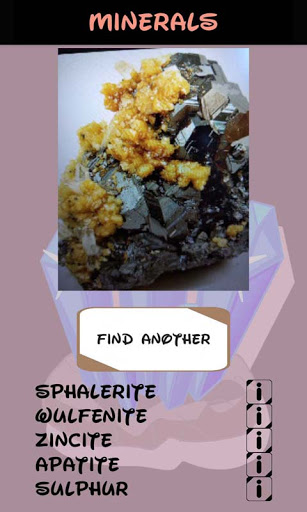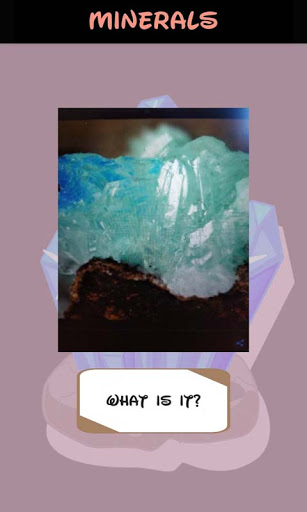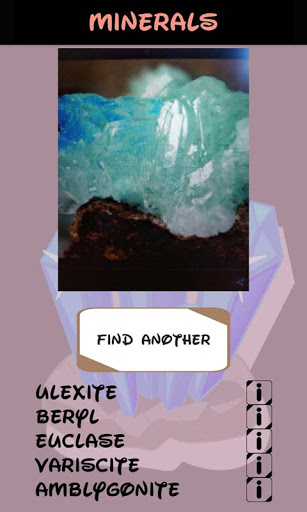Take advantage of this neural network to identify what mineral it is.
By taking photos or photos previously made you can discover what type of rock it is, a classification will appear with the five names of the minerals that are most similar, by pressing the corresponding button you can directly find all the information on the internet.
You can also do it directly with the camera of your phone through a video.
A fast and fun way to identify, know and discover the name of the minerals that surround you.
Introduction
Automatic mineral identification is a crucial aspect of mineralogy, enabling scientists and industry professionals to rapidly and accurately determine the composition of minerals. This advanced technology utilizes various techniques, including spectroscopy, X-ray diffraction, and electron microscopy, to provide precise information about mineral species.
Spectroscopic Techniques
Spectroscopy plays a vital role in mineral identification. By analyzing the absorption, emission, or reflection of light by minerals, scientists can identify specific elements and molecules present within the sample. Techniques such as infrared spectroscopy, ultraviolet-visible spectroscopy, and Raman spectroscopy are commonly employed for this purpose.
X-ray Diffraction (XRD)
XRD is a non-destructive technique that utilizes X-rays to determine the crystal structure of minerals. The diffraction patterns generated by X-rays interacting with the mineral sample provide valuable information about the arrangement of atoms and molecules within the crystal lattice. XRD is particularly useful for identifying minerals with distinct crystal structures.
Electron Microscopy
Electron microscopy, including scanning electron microscopy (SEM) and transmission electron microscopy (TEM), allows for detailed imaging of minerals at the microscopic and atomic levels. These techniques reveal the morphology, surface features, and internal structure of minerals, providing insights into their growth and formation processes.
Data Analysis and Interpretation
The data obtained from spectroscopic, XRD, and electron microscopy techniques are analyzed and interpreted using specialized software and algorithms. These algorithms compare the collected data with reference databases to identify the most likely mineral species present in the sample.
Applications
Automatic mineral identification has numerous applications in various fields, including:
* Geology and Mineralogy: Identifying minerals in rocks, sediments, and ores for geological mapping and resource exploration.
* Mining and Metallurgy: Determining the composition of mineral deposits to optimize extraction and processing methods.
* Environmental Science: Identifying minerals in soil, water, and air samples for environmental monitoring and remediation.
* Materials Science: Characterizing minerals used in industrial processes, such as ceramics, glass, and construction materials.
Advantages and Limitations
Automatic mineral identification offers several advantages:
* Speed and Efficiency: Rapid and automated analysis of mineral samples.
* Accuracy: Precise identification of mineral species based on scientific principles.
* Non-Destructive: Most techniques do not require sample destruction, preserving the integrity of the sample.
However, limitations include:
* Cost: The equipment and software required for automatic mineral identification can be expensive.
* Sample Preparation: Some techniques may require specific sample preparation procedures, which can be time-consuming.
* Ambiguity: In certain cases, multiple mineral species may exhibit similar spectroscopic or diffraction patterns, leading to potential ambiguity in identification.
Conclusion
Automatic mineral identification is a powerful tool that has revolutionized the field of mineralogy. By combining advanced techniques and algorithms, it enables scientists and industry professionals to rapidly and accurately determine the composition of minerals, unlocking valuable insights into geological processes, resource exploration, and material properties.
Take advantage of this neural network to identify what mineral it is.
By taking photos or photos previously made you can discover what type of rock it is, a classification will appear with the five names of the minerals that are most similar, by pressing the corresponding button you can directly find all the information on the internet.
You can also do it directly with the camera of your phone through a video.
A fast and fun way to identify, know and discover the name of the minerals that surround you.
Introduction
Automatic mineral identification is a crucial aspect of mineralogy, enabling scientists and industry professionals to rapidly and accurately determine the composition of minerals. This advanced technology utilizes various techniques, including spectroscopy, X-ray diffraction, and electron microscopy, to provide precise information about mineral species.
Spectroscopic Techniques
Spectroscopy plays a vital role in mineral identification. By analyzing the absorption, emission, or reflection of light by minerals, scientists can identify specific elements and molecules present within the sample. Techniques such as infrared spectroscopy, ultraviolet-visible spectroscopy, and Raman spectroscopy are commonly employed for this purpose.
X-ray Diffraction (XRD)
XRD is a non-destructive technique that utilizes X-rays to determine the crystal structure of minerals. The diffraction patterns generated by X-rays interacting with the mineral sample provide valuable information about the arrangement of atoms and molecules within the crystal lattice. XRD is particularly useful for identifying minerals with distinct crystal structures.
Electron Microscopy
Electron microscopy, including scanning electron microscopy (SEM) and transmission electron microscopy (TEM), allows for detailed imaging of minerals at the microscopic and atomic levels. These techniques reveal the morphology, surface features, and internal structure of minerals, providing insights into their growth and formation processes.
Data Analysis and Interpretation
The data obtained from spectroscopic, XRD, and electron microscopy techniques are analyzed and interpreted using specialized software and algorithms. These algorithms compare the collected data with reference databases to identify the most likely mineral species present in the sample.
Applications
Automatic mineral identification has numerous applications in various fields, including:
* Geology and Mineralogy: Identifying minerals in rocks, sediments, and ores for geological mapping and resource exploration.
* Mining and Metallurgy: Determining the composition of mineral deposits to optimize extraction and processing methods.
* Environmental Science: Identifying minerals in soil, water, and air samples for environmental monitoring and remediation.
* Materials Science: Characterizing minerals used in industrial processes, such as ceramics, glass, and construction materials.
Advantages and Limitations
Automatic mineral identification offers several advantages:
* Speed and Efficiency: Rapid and automated analysis of mineral samples.
* Accuracy: Precise identification of mineral species based on scientific principles.
* Non-Destructive: Most techniques do not require sample destruction, preserving the integrity of the sample.
However, limitations include:
* Cost: The equipment and software required for automatic mineral identification can be expensive.
* Sample Preparation: Some techniques may require specific sample preparation procedures, which can be time-consuming.
* Ambiguity: In certain cases, multiple mineral species may exhibit similar spectroscopic or diffraction patterns, leading to potential ambiguity in identification.
Conclusion
Automatic mineral identification is a powerful tool that has revolutionized the field of mineralogy. By combining advanced techniques and algorithms, it enables scientists and industry professionals to rapidly and accurately determine the composition of minerals, unlocking valuable insights into geological processes, resource exploration, and material properties.













